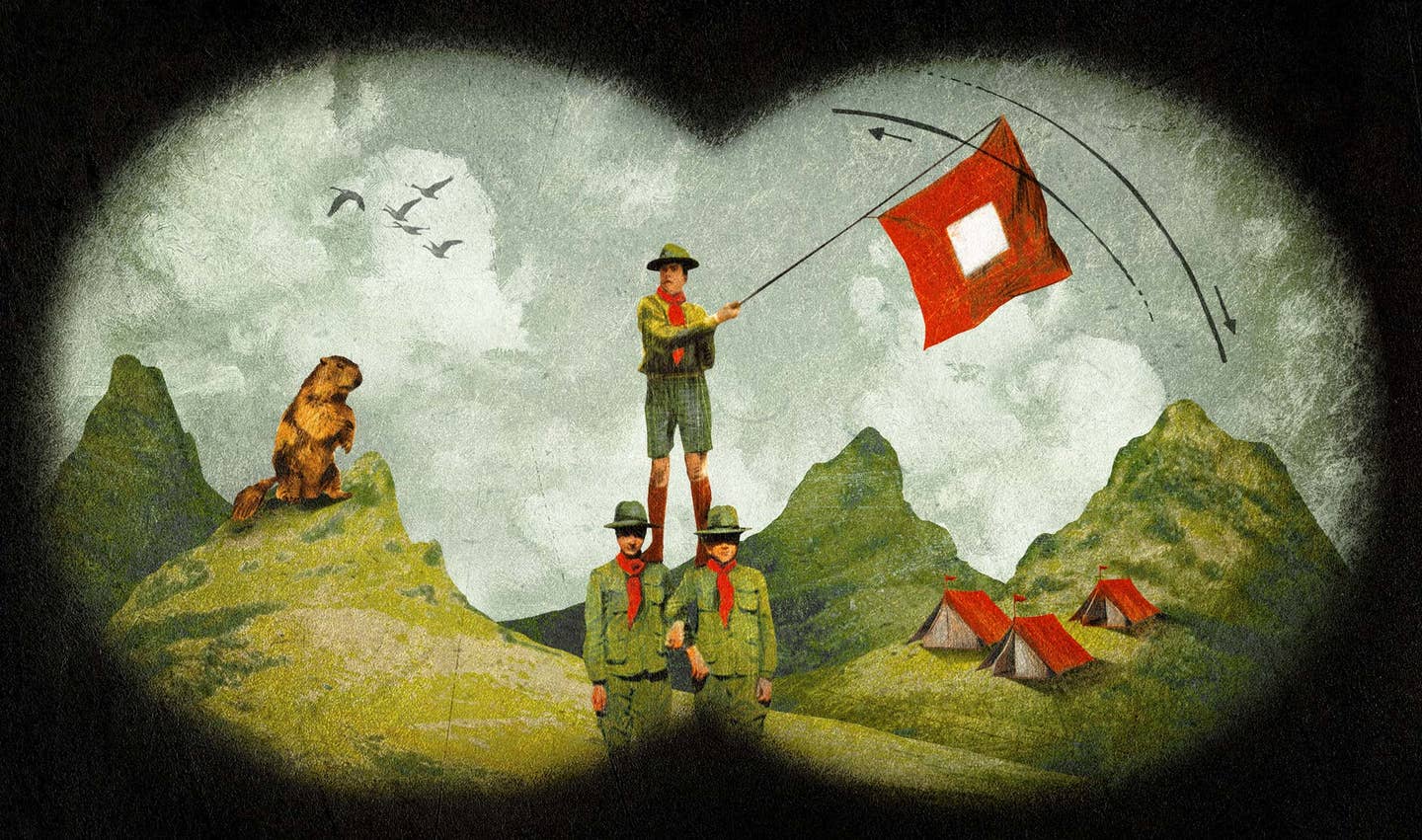
“Someone reading it has to slow down simply to process the bizarre message. Having thus slowed, one was free to appreciate the wisdom of the sign’s presentation.” ALE+ALE/Morgan Gaynin
We, being human, are ill-disposed to wasting shoe leather crossing the street in search of wisdom. But, being pilots, we enjoy the pursuit of knowledge.
This, as Aesop said, may easily be both hidden and discovered in anecdote. All know of the soldier’s first parachute jump, of his failure to pull the rip cord, and his subsequent explanation—the sad question, “What was the name of that Native American…?”
A similar story concerns a couple entering the lobby of an opera house. The husband says, “I wish I’d brought the piano.” The wife asks, “Why in the world would you want to have brought the piano?” He says, “Because I left the tickets on the piano.”
Ah, memory.
I retain, in mnemonic form, “righty tighty, lefty loosey” and GUMPS, meaning gas, undercarriage, mixture, prop(s) or pump(s), seatbelt and any number of addendums. Anything more—especially under pressure—has to, at least with me, take a backseat to thoughts such as “fly the airplane” and “maybe I’ll look it up on the ground.”
Finally, who devised these various mnemonics? Somebody in an office, on the payroll, with an endless hour to kill before the whistle.
I exempt IMSAFE from the list, which might indeed be a useful diagnostic of mental fitness—the test being the ability to recall its translation.
Emil Bernays, “Father of Public Relations,” taught that the only effective advertising was that which interrupted the thought processes. For example, a road sign at Seven Gates, on Martha’s Vineyard: “Speed limit: 14½ miles an hour.” Someone reading it has to slow down simply to process the bizarre message. Having thus slowed, one was free to appreciate the wisdom of the sign’s presentation.
I also retain the old Scout First Aid memory device: of the victim, “Face is red, raise the head; face is pale, raise the tail.” Well, the face will not be red but pale, and the prescribed manipulation is, I believe, meant to address shock and increase the blood flow to the head and viscera. It is cast not in “easy-to-remember” but in “impossible-to-forget” terms. It cannot be confused or inverted.
Contrast the magnificent puzzle of the lost-comms light signals from the tower. Who among us would bet the farm on the ability to, right now, correctly recite the difference between steady green and flashing red (or as it may be, the inverse).
I have them laminated to my clipboard, but each time I study them with an aid to incising them perpetually in memory, I find, after the briefest pause, I am no less confused than previously.
I should also note, in an attempt to allow the readership to gauge the worth of my perceptions, I have, since my youth, celebrated the twice-yearly time change by repeating “spring back, fall forward,” which formulation seems to me, even though inexact for clock-adjustment, a fairly accurate assessment of the juddering process of life as I understand it.
One way to interrupt the processes of thought is the use of profanity and the obscene. I will not tax the gentility of our readership by reference to various three-letter groupings. Nor will I refer to a conversation overheard on final to KCMA, between the tower and a certain de Havilland bush plane, whose beauty the controller admired, and the response of its pilot to the compliment, which reduced all on the frequency to various levels of restrained hilarity.
I will, in the spirit of inquiry, recur to the profane below but, first, mention a mnemonic I have retained for 60 years:
Dot is right, said the Dutchman.
In the ’60s, a Boy Scout needed his Communications badge to progress past Life and into the higher ranks. The badge required proficiency in Morse code. We were taught Morse could be sent over distances using one simple flag.
Read More from David Mamet: Three Green, No Red
For the past 60 years, this fantasist has imagined himself, stranded and in need of aid, on some remote hill. Across the valley, there would appear an aid party, and the stranded would communicate his situation and needs by waving the flag in Morse code, a process known as wigwag. Flag to the left, dash; flag to the right, dot. Dot is right.
Now I consider various Morse abbreviations, in particular the numerical.
The phrase “23 skidoo” is generally unknown and unknowable in origin. I’d always heard that it was Morse code used on the railroad telegraphs, meaning “clear the wire.”
I’d heard also (as perhaps you have too) that 86 is used similarly today and remembered, if at all, as a bartender’s phrase meaning: “No more booze, throw the bum out.” In the publication of the American Institute of Electrical Engineers, volume 26, 1928, it states to the effect that an “86 device” was a lockout that trips the associated machine into the inoperative mode until reset by proper authority.
But (and finally) to our purposes, consider these three authenticated Morse numeric signoffs: 73 meaning “best wishes,” 88 meaning “love,” and 99—which a sense of decency has omitted from various lists and euphemized on others—is listed as “go to hell” but generally understood as a somewhat more stringent instruction.
My question: Can it be that we have here solved the mystery of the true origin and meaning (a riposte to male presumption) of the name of that most famous association of women in aviation?
This story originally published in the December 2019 issue of Flying Magazine

Sign-up for newsletters & special offers!
Get the latest FLYING stories & special offers delivered directly to your inbox






